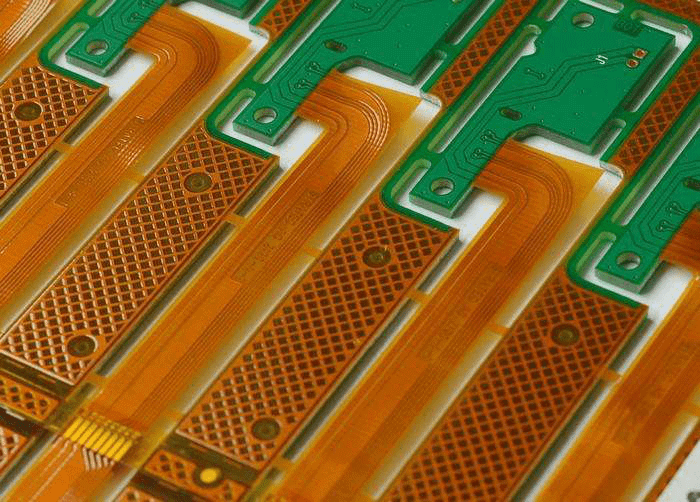Most, if not all, electrical gadgets rely on electrical circuits to transfer electrical currents from one electrical component to another. However, this current transfer can be disrupted by radio frequency interference or RFI. Generally, RFI disrupts electrical circuits and makes them work abnormally, which ultimately disrupts the current flow. When such as case occurs, the affected device might start acting abnormally or eventually fail to function. However, using FR shielding, you can get around this issue quickly. But what exactly is RF shielding? How does RF shielding work? Which RF shielding materials do manufacturers utilize? And why is RF shielding crucial?
RF Shielding in a Nutshell
RF (Radio Frequency) shielding is simply the act of effectively blocking off RF electromagnetic signals which cause RFI (Radio Frequency Interference). Generally, RFI disrupts the electrical circuits of a gadget, causing them to function abnormally. To achieve RF shielding, you must install barriers that encompass magnetic and conductive materials around the following:
– Cable lines
– The device’s electronic circuitry
– Potential victims and sources of electromagnetic fields
Adding this barrier isolates the specific points from the external environment, preventing RFI.
Even though RF shielding is pretty efficient, its effectiveness in terms of reducing interference usually depends upon the following:
– The shielding material’s properties,
– The shield’s thickness and design
– And lastly, the electromagnetic field and size of various discontinuities on the RF shield.
RFI is an issue that can quickly reduce the effectiveness and performance of various communication and electronic devices. However, different types of gadgets have varying responses to radiofrequency interference. RFI can lead to the following:
– Information and system losses
– Security and data breaches
– And even absolute failure on some gadgets
However, even though RFI has been around for some time, there is no way to eliminate it from electronic gadgets. That is because electronic circuits tend to emit RF electromagnetic signals, which affect them negatively.
The utilization of Radiofrequency shielding is an excellent measure that can help you effectively safeguard your equipment and devices from the harmful effects that come from RFI.
The Nature of RFI

Generally, electromagnetic waves tend to carry energy. Moreover, this consists of magnetic and electric waves oscillating at a ninety-degree angle from each other. Additionally, electromagnetic waves tend to have the following characteristics:
– Frequency
– Wavelength
RFI and Electromagnetic Interference (EMI)
EMI occurs whenever EM (electromagnetic) signals or waves disturb how electronic devices function normally. Most people refer to this condition as noise or electromagnetic noise. But how is RFI different from EMI?
Generally, EM radiation at any given frequency tends to cause interference. On the other hand, RFI is a type of electromagnetic interference when the EM signals involved in the process are in the RF band of an electromagnetic spectrum.
Typically, frequencies in radio signals range between 300 gigahertz and 3 kilohertz. However, though different on some level, most people use the terms RFI and EMI interchangeably.
Different Kinds of RFI
RFIs fall into various categories according to the following characteristics:
– Bandwidth
– Duration
– Source
Sources
Man Made
Electrical and electronic gadgets sometimes emit EM radiations which ultimately affect other equipment and devices that are close to them. RFI artificial sources fall into two categories:
– Intentional sources
– Unintentional sources
Natural Sources
The naturally occurring radio frequency interference is generated because of astronomical phenomena, for example:
– Snowstorms
– Dust storms
– Cosmic noise
– Static electricity
– Solar flares
– Lighting strikes
Electronic gadgets that utilize wireless signals, for example, remote controls, wireless routers, Bluetooth speakers and mice, laptops, and cellphones, are abundant sources of radio frequency interference. Moreover, as these gadgets become faster, RF increases, and more EM radiation is ejected into the surrounding. The EM radiations that leak into the surrounding cause RFI to surrounding devices.
Intentional Sources
The intentional radiofrequency sources are various gadgets that are designed to efficiently emit EM energy into the surrounding. These RFI sources include:
– Radio transmitters
– Jamming devices radars
Duration
Continuous RFI is the radio frequency interference continuously emitted by various RFI sources through radiation or conduction. On the other hand, the impulse RFI occurs within a short time or intermittently. Lighting and switches are common sources of impulse RFIs that disrupt nearby gadgets’ current and voltage equilibrium.
Bandwidth

Bandwidth simply refers to the frequency range at which various devices experience RFI.
Narrowband
When RFIs emitted are narrow band frequencies or single frequency RFIs, you can refer to these RFIs as narrowband RFIs. These RFIs are created mainly by various types of oscillators. Moreover, they also occur due to spurious signals from multiple types of distortions in transmitters.
Narrowband RFIs tend to have less impact on electrical gadgets compared to other RFIs. However, it would help if you kept them in check to avoid any surprises. Moreover, these RFI are usually emitted by various devices, for example:
– Wi-Fi routers
– Mobile phones
Broadband
Broadband radiofrequency interference occurs in various frequencies, which can easily compromise a large section of the EM spectrum. Moreover, this interference doesn’t happen in a discrete or single signal. Instead, broadband radio frequencies exist in various forms and can occur due to artificial and natural sources.
An example of a natural source that causes this RFI is the sun, which is because the sun tends to block specific satellite signals, which causes a disruption in the communication system.
Additionally, more sources of this RFI include:
– Defective power lines
– Arc welding
– Faulty brushes found in generator and motors, et cetera
RF Shielding Materials

Typically, the effectiveness of an RF shield solely depends on the following factors:
– The electrical conductivity of the RF shield material
– The magnetic shielding properties
– The EM wave’s frequency
– The shield’s geometry
Moreover, high conductivity tends to help the shielding material reflect or block electronic components of EM waves. On the other hand, higher magnetic permeability allows the shielding material to provide low reluctance paths for the MF (magnetic flux), which is beneficial in terms of drawing and absorbing magnetic fluxes on the shielding sectors.
However, the selection of RF materials is usually based on one main point:
– The strength of the magnetic and electric components of EM fields.
The most common radiofrequency shielding components include the following:
Copper
Out of the many radio frequency shielding materials in the market today, copper is the most reliable as per shielding performance. That is because copper is effective in terms of attenuating and absorbing the magnetic and electric components of EM waves hence it has the highest rf shielding performance. Moreover, it has impeccable electrical conductivity, which makes it perfect for this application.
Copper or CU is easy to produce. Moreover, you can easily manipulate it to form various shapes. Due to these reasons, shields made using copper tend to be pretty easy to install on various gadgets.
Additionally, copper is corrosive resistant, plus it can resist oxidation which occurs due to the environment.
Common copper alloy varieties that manufacturers utilize to build RF Interference shields include:
– Bronze
– Brass
– Beryllium copper
– Phosphorus bronze
Beryllium copper and phosphorus bronze have a unique elasticity feature, making them great for contact applications in springs and batteries.
However, even though copper has impeccable features that make it stand out, it is pretty expensive compared to other materials.
Nickel Silver
Nickel silver which also goes by the name copper alloy 770, is a widely utilized RF shielding material that contains the following components:
– Zinc
– Copper
– Nickel
Nickel silver is primarily utilized in environments that are highly corrosive. Moreover, this material is pretty effective in terms of radiofrequency from mid-kilohertz to the gigahertz frequency range. Additionally, this component’s permeability stands at 1, which makes this material great for constructing radio frequency shields for MRI equipment.
Copper alloy 770 doesn’t need post-plating to become solderable and corrosion-resistant, making it great for RF shielding. Moreover, this component is highly aesthetic even though it doesn’t contain silver.
Aluminum
Aluminum (Al) is a metal component that has a weight-to-strength ratio and impeccable electrical conductivity. Moreover, this material is pretty versatile.
Thin Al sheets are pretty efficient in terms of blocking low-RF waves. Due to this reason, aluminum tends to be utilized to generate RF shields for various electrical devices. However, the conductivity of aluminum tends to be 50 – 60% less than that of copper. Therefore, to achieve the shielding effectiveness of copper when utilizing aluminum, you have to make the shield thicker.
Moreover, aluminum tends to be pretty prone to oxidation and galvanic corrosion. Therefore, extensive exposure of Al RF shields to the environment might lead to oxidation on its surface. Moreover, the solderability of aluminum RF is also pretty poor.
Steel
Steel is produced in varying production processes, and it bears assorted alloy content. Moreover, steel and various ferromagnetic components offer low-frequency MF (magnetic field) shielding that lacks in both aluminum and copper alloy. Furthermore, these components possess multiple mechanical and RF shielding properties. However, this feature depends on the steel variety that you are using.
Low Carbon Steel
When compared with steel components that have high carbon levels, these steel variety has higher saturation and permeability. These properties tend to be crucial when drawing magnetic components of EM waves in radiofrequency shielding.
Annealed Steel
These steel variety has enhanced magnetic features when compared with other steel varieties. Generally, Annealing relieves the steel’s internal stress and enlarges the component’s grain structure.
Conclusion
For an electronic gadget to be regarded as functioning in an optimal manner, it has to be working correctly. However, RFI tends to decrease the device’s performance by making the device’s electrical circuit perform abnormally. However, using various RF shielding materials, you can quickly curb this issue before it drags down your device’s performance or makes it fail.






